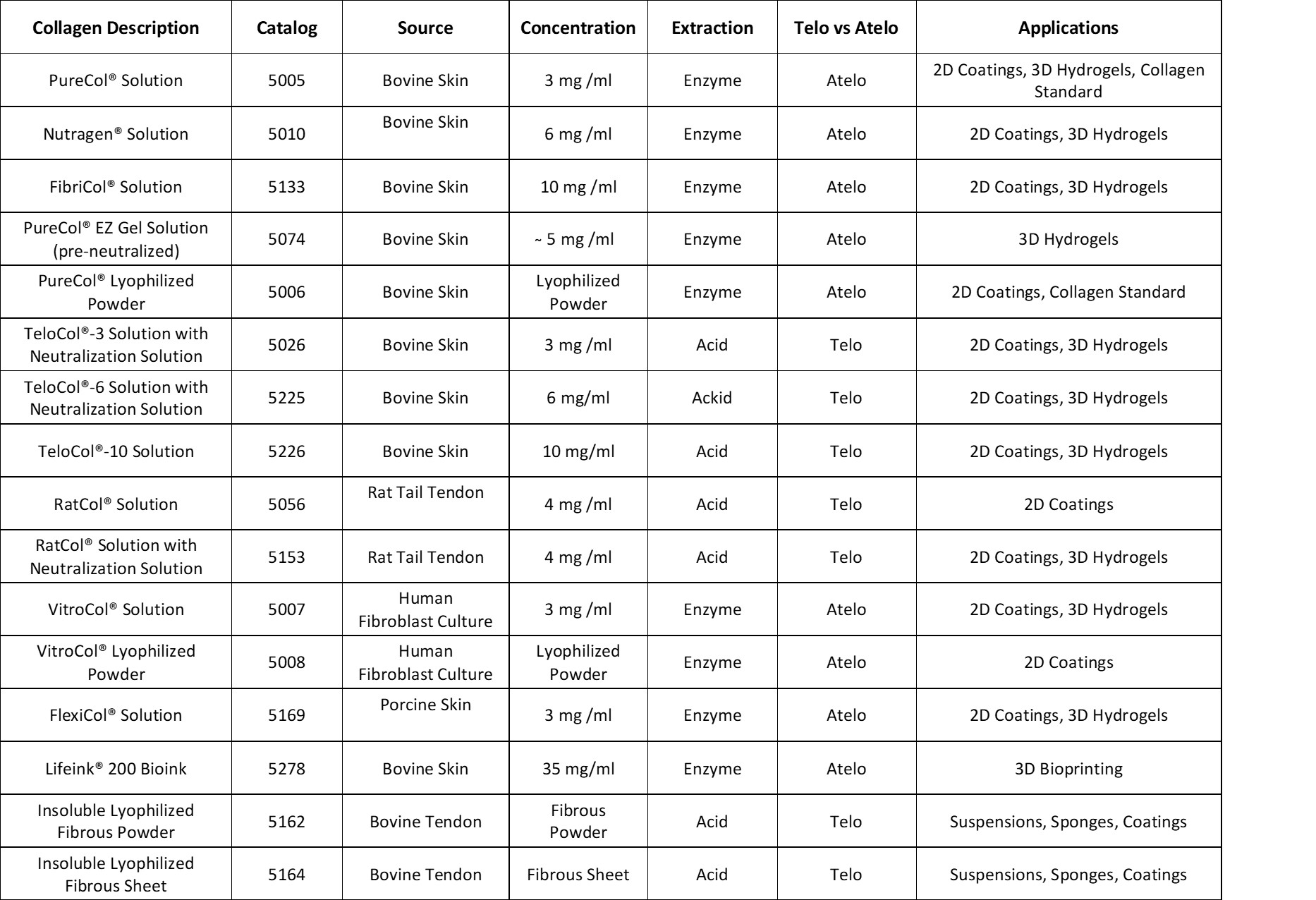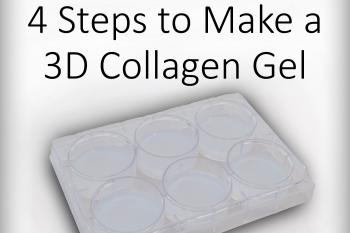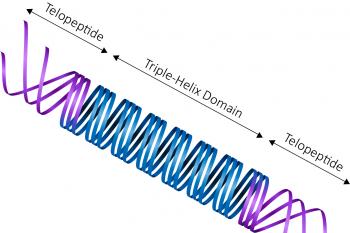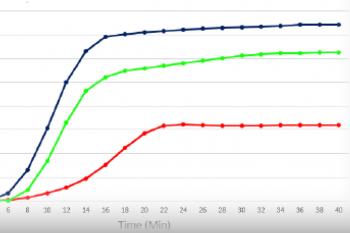Collagen
General Collagen Information
Collagen is the most abundant protein in the human body. Type I collagen is a major structural component of skin, bone, tendon, and other fibrous connective tissues. In our effort to provide an in vivo-like environment for cells, researchers will grow cells on inside collagen hydrogels or on top of collagen coatings.
Forming a 3D Hydrogel from Collagen Type I
The following list provides general steps for forming 3D hydrogels from type I collagen. Full directions for use, and commonly asked questions are found on individual product pages.
- Concentration - Typical working concentrations for 3D hydrogels are > 1 mg/ml for Telocollagen, and 1.5 mg/ml for Atelocollagen.
- pH - Neutralize the collagen to a pH of ~7.0-7.4
- Osmolarity - The collagen salts should be isotonic (~300 mOsmo)
- Temperature - Warm collagen to 37°C after completing the above steps to form a 3D hydrogel.
Telo vs Atelo Collagen
Collagen is typically extracted from a wide variety of sources, such as cow hide, rat tails, or porcine tendon, to name a few. Typically, you can extract the collagen using acid, or with an enzyme.
Collagen extracted with acid will result in Telocollagen - meaning it has the telopeptide portion of the collagen molecule intact.
When extracted using an enzyme, the collagen molecule is cleaved at the junction of the triple-helix domain and the telopeptide. The resulting collagen is known as Atelocollagen (without the telopeptide).
Telocollagen, with the telopeptide domain, will be able to form 3D hydrogels much quicker, and stronger, than Atelocollagen, that lacks the telopeptide domain. (See 3D Hydrogel Stiffness section below)
Telocollagen is also generally perceived as being more "native," though it has been reported that the telopeptides can elicit an immune response during in vivo studies.

3D Collagen Hydrogel Stiffness
The two main factors in determining 3D hydrogel stiffness are collagen concentration and telocollagen vs atelocollagen.
The higher the concentration, the firmer the hydrogel. PureCol, Nutragen and FibriCol are all the type I atelocollagen, except at varying concentrations (3, 6 and 10).
Telocollagen hydrogels will polymerize significantly faster and form stronger hydrogels than their atelocollagen counterparts at similar concentrations. Note the difference between TeloCol-3 vsPureCol (both 3 mg/ml), and TeloCol-6 vs Nutragen (both 6 mg/ml).
To see the rest of the data, please read our whitepapers.

Type I Collagen Summary Chart
Below is a list of our Type I collagen products. Most can be used for 2D coatings, 3D hydrogels, suspensions, sponges, and 3D Bioprinting, and countless more applications and uses. Here is a summary table of our collagen products to help sort everything out.

There are quite a few considerations when choosing the right collagen product for your application. For example, it is not recommended to resuspend lyophilized atelocollagen for 3D hydrogel applications. For help choosing the right product, please email Support@AdvancedBioMatrix.com.




